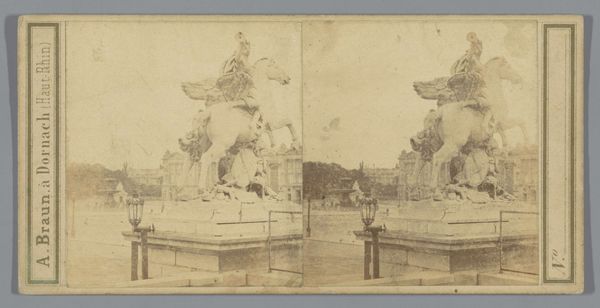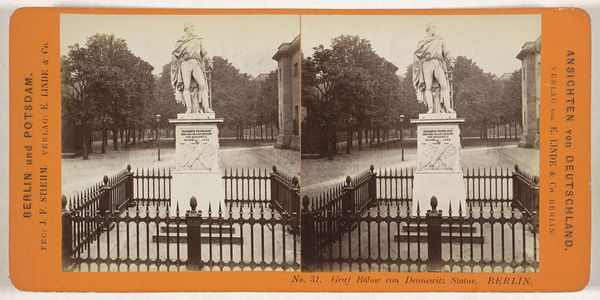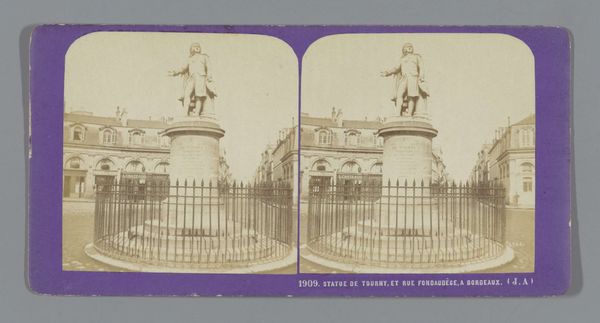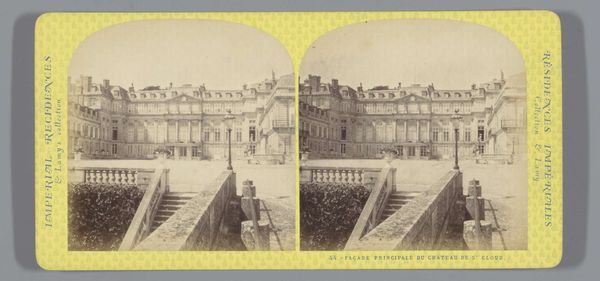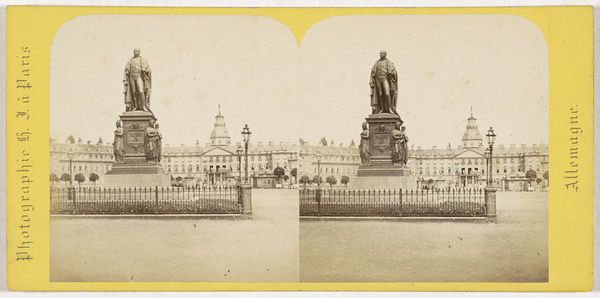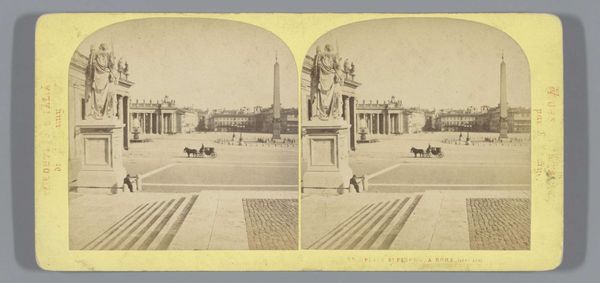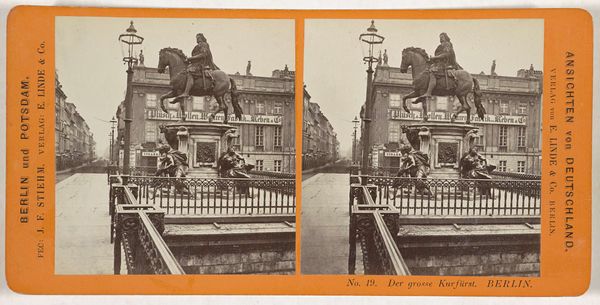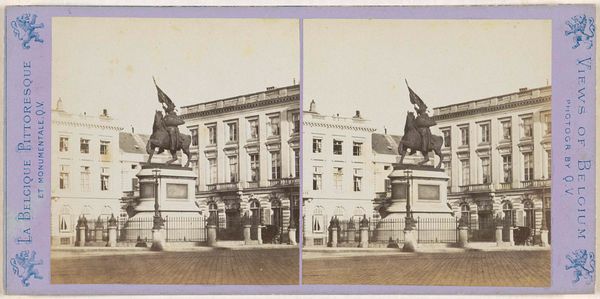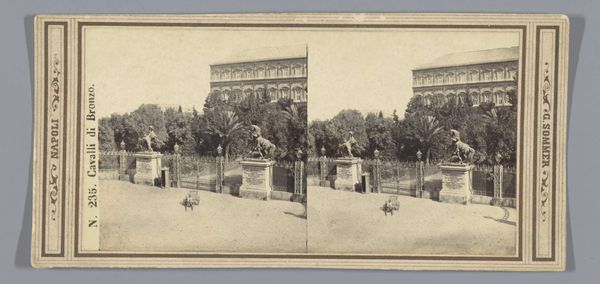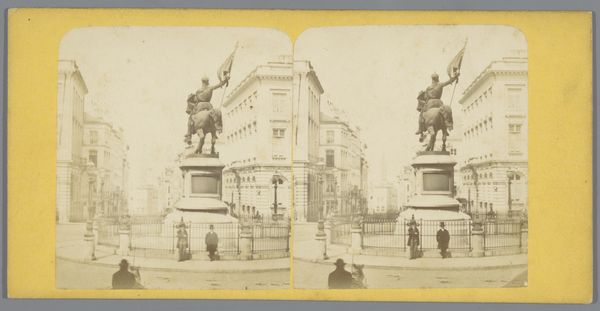
Ruiterstandbeeld van koning Lodewijk XIV van Frankrijk op het binnenhof van het paleis van Versailles c. 1860 - 1880
0:00
0:00
Dimensions: height 85 mm, width 170 mm
Copyright: Rijks Museum: Open Domain
Editor: This is a photograph taken sometime between 1860 and 1880 by Ernest Eléonor Pierre Lamy. It shows a statue, the equestrian statue of King Louis XIV, standing in the courtyard of the Palace of Versailles. What strikes me is the rigid formality of the scene. What can you tell me about its cultural symbolism? Curator: The enduring image of Louis XIV astride his horse... consider how potent this symbol was then, and even now. The king is elevated, literally and figuratively, claiming dominion. The outstretched arm? It is not merely a gesture; it speaks of command, direction, destiny. Editor: So, it’s about power and control? Curator: Absolutely. But what kind of control? Consider Versailles itself. A gilded cage, some might say. Louis brought the nobility there, kept them close. This image is as much about containing power, keeping it close, as it is about projecting it outward. Look at how the buildings seem to almost box in the statue, defining its space. Editor: That’s interesting. It’s not just a statement, it’s also a containment strategy. So what emotional impact was the statue designed to convey? Curator: Assurance, grandeur, stability... The King wanted to create a specific emotional environment for his reign, projecting authority, discouraging dissent. A lot to consider here, wouldn’t you say? What strikes *you* as you continue looking? Editor: Well, now I'm seeing a complex interplay of control and containment within the symbol of the King, making it less straightforward than it initially seemed. Curator: Indeed, that is why symbols continue to fascinate!
Comments
No comments
Be the first to comment and join the conversation on the ultimate creative platform.

